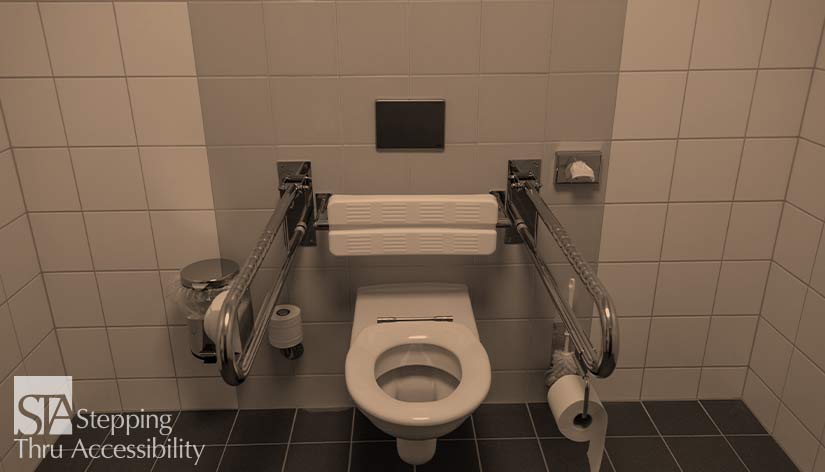Blog
Return to Blog »
Janis Kent, FAIA, Architect, CASp © September, 2022 The requirements in the ADA Standards apply to toilets and grab bars used by people for independent use and include medical and long-term care facilities. But in housing that supports the elderly such as in nursing facilities and assisted living residential communities, there is also the necessity to provide for assisted-use for toileting needs. While the ADA currently only has the independent-use criteria, assisted-use can be provided in other than the required mobility rooms as well as in private homes when we talk about aging in place. There have been studies showing locations of toilets in juxtaposition with grab bars for people who need assistance. This can include added space for a two-person-assisted transfer, a one-person assisted transfer, and an independent front approach. The studies also review assisted transfers using a floor-based lift or floor-based sling. The extra space and dimensions are not only for maneuvering but also for having additional caregivers and equipment positioned in the space. Another item to note is that seniors, for the most part, are more frail and do not have the upper body strength to perform a side or diagonal transfer, which is mostly what ADA addresses. Seniors have different needs than the younger population. A Task Force was sponsored by the Rothschild Foundation for studying the needs of elderly in nursing homes, with the intent of updating ADA and ICC A117.1. This was started in 2009 in conjunction with other organizations and a White Paper was issued, “Proposal for Additions to Accessibility Standards for Nursing Home & Assisted Living Residents In Toileting and Bathing”. The study suggested more space from the centerline of the toilet to walls or other obstructions of 30″ minimum. It also stated that two fold-down grab bars, with double bars each, are easier to use, but the ideal distance between the two needs further study and most likely should be less than the width of the toilet seat or its tank. It showed that a lower bar of 30½” was easier for shorter people to push off of the toilet, and that the front of the bar was used to pull up from a wheelchair to transfer. It also stated that the bars be placed shoulder-width apart. And the overall summary was that further study needed to be done in order to provide ranges for dimensions. A study published in 2017, “Beyond ADA Accessibility Requirements: Meeting Seniors’ Needs for Toilet Transfers” was based on 130 residents at skilled nursing homes and assisted living facilities. It shows that for seniors, the rear ADA-stipulated grab bar is rarely used. A fold-down grab bar on each side of the toilet is preferred. The grab bars were tested to be favorable, at a location of 14″ from the toilet centerline, 32″ above the floor, and extending to 6″ minimum in front of the toilet, with a wall on one side located 24″ from the toilet centerline. The study stated that this configuration was tested as significantly positive for independent transfer and one-person assisted transfer, and a bit lower for two-person assisted transfer, although still positive. This testing was for both the residents and their caregivers, and that further study needs to be done on two-person assisted transfer. Nothing in this article constitutes legal or design advice for a particular project or circumstance. Be aware that your local City or County may have additional requirements that are different or more restrictive than the State or Federal requirements. Also, this article is an interpretation and opinion of the writer which may vary for a particular project or due to other circumstances. It is meant as a general summary – current original regulations should always be reviewed when making any decisions and specific advice by a qualified professional should be secured for a particular project or circumstance. © Janis Kent, FAIA, Architect, CASp 2022The Elderly – Toilets & Grab Bars – Some Thoughts
